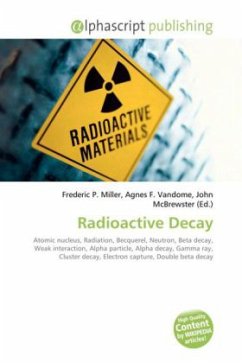In nuclear physics, beta decay is a type of radioactive decay in which a beta particle (an electron or a positron) is emitted. In the case of electron emission, it is referred to as beta minus ( ), while in the case of a positron emission as beta plus ( +). Kinetic energy of beta particles has continuous spectrum ranging from 0 to maximal available energy (Q), which depends on parent and daughter nuclear states participating in the decay. Typical Q is around 1 MeV, but it can range from a few keV to a few tens of MeV. The most energetic beta particles are ultrarelativistic, with speeds very close to the speed of light.
Bitte wählen Sie Ihr Anliegen aus.
Rechnungen
Retourenschein anfordern
Bestellstatus
Storno








